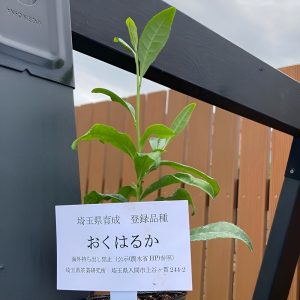
Okuharuka (おくはるか) can be translated as “interior spring aroma”.
“Oku” is a prefix used for late budding cultivars, and “haruka” refers to the cherry blossom leaf aroma of this cultivar, which evokes spring.
History of Okuharuka
In 1975 at the Saitama prefecture tea industry research station, a late budding cultivar with high yield named Saitama 20 was crossed with Saitama 7, a cultivar with resistance to cold weather.
Saitama 20 is a hybrid of Sayamamidori and Yamatomidori.
Saitama 7 was a seedling selected from a cultivar named Sai56G1-99, which came from a natural crossing of Yabukita tea plants.
Anyway, the best seedling was selected, and it was tested in 2002.
Finally, it was registered as Okuharuka in 2015 under the seed and seedling law.
Characteristics of Okuharuka
This cultivar can be picked from 6 to 9 days later than Yabukita, which means that it rarely takes damage from late frost.
Young leaves of Okuharuka are long, thin and slightly big.
Its cuttings take root easily.
This cultivar has a higher yield than Yabukita, and is even better at resisting cold weather.
Okuharuka is fairly resistant to anthracnose, but it is somewhat weak against the gray blight, the white peach scale, and the blister blight.
In addition, it has a medium resistance to the bacterial shoot blight.
As a sencha, this cultivar has leaves of good shape and color.
Okuharuka is high in coumarin, which is one of the reasons that it has a cherry blossom leaf aroma.
It’s similar to the aroma of Shizu-7132.
